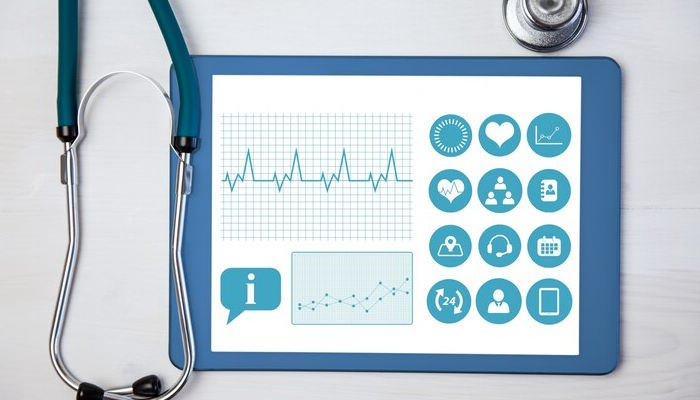The healthcare landscape is rapidly evolving, and at the heart of this transformation is Health Information Technology (HIT). From patient care to medical education, HIT is revolutionizing the way information is managed, shared, and analyzed within the healthcare ecosystem. In this comprehensive exploration, we will dissect how HIT is shaping modern healthcare, the profound impact it is having on healthcare professionals and medical students, the challenges associated with its implementation, and the exciting future trends that are set to redefine the industry.

Understanding the Essentials of Health Information Technology
Health Information Technology refers to the application of information processing involving both computer hardware and software that deals with the storage, retrieval, sharing, and use of healthcare data, information, and knowledge for communication, decision-making, and quality patient care. From electronic health records (EHR) to telehealth services, HIT encompasses a broad array of tools and systems that are integral to the functioning of the healthcare industry.
The Core Components of Health Information Technology
Key components of Health Information Technology (HIT) encompass Electronic Health Record (EHR) systems, practice management software, and diverse Health Information Exchanges (HIE) that streamline patient data sharing among varied healthcare entities. Moreover, telemedicine, mHealth applications, and wearable tech are swiftly establishing themselves as indispensable tools within the HIT arsenal.


Importance of Health Information Technology in Modern Healthcare
The integration of HIT is reshaping the healthcare sector by driving efficiency, enhancing diagnostic capabilities, and fostering a more collaborative and patient-centric approach to care.
Enhancing Efficiency in Patient Care
Digital health records and automated processes are expediting the flow of patient information, reducing paperwork, and enabling more efficient workflows in healthcare settings. This translates to quicker diagnoses and treatment, as well as more time for providers to engage with their patients.


Improved Accuracy of Diagnoses and Treatment
By centralizing patient data, HIT systems allow for a comprehensive view of a patient’s medical history, allergies, and other critical information, significantly reducing the likelihood of errors in diagnosis and treatment planning.
Enhanced Communication Among Healthcare Providers
Interoperable EHR systems facilitate seamless communication between different healthcare professionals involved in a patient’s care. Real-time access to a patient’s status improves care coordination and ensures that all providers are working from the same information.


Impact of HIT on Healthcare Professionals
For doctors, nurses, and administrative staff, HIT considerably eases the burdens of record-keeping and enables more informed, evidence-based decision-making.
Streamlining Administrative Tasks
Automation of administrative tasks, such as appointment scheduling and billing, liberates healthcare professionals to focus on clinical responsibilities, ultimately leading to higher job satisfaction and better patient care.


Facilitating Data-Driven Decision-Making
Advanced analytics tools within HIT systems mine large datasets for trends and insights, aiding in the development of personalized treatment plans and contributing to improved overall patient outcomes.
Enhancing Patient Engagement and Outcomes
HIT empowers patients to take a more active role in their healthcare by providing them with access to their health data. This transparency and engagement lead to better-informed decisions and, subsequently, healthier outcomes.


Benefits for Medical Students
The adoption of HIT in medical education and training is helping to mold the next generation of healthcare professionals by providing them with advanced resources and exposure to cutting-edge practices.
Future Trends in Health Information Technology
Looking ahead, several emerging trends in HIT are poised to further transform the healthcare industry, making care more accessible, outcomes more predictable, and the patient experience more satisfying.


Artificial Intelligence in HIT
AI and machine learning are being harnessed to analyze complex medical data, offer personalized treatment recommendations, and even predict disease outbreaks. AI-driven chatbots are also supporting patient engagement and clinical support.
Telemedicine Advancements
The rapid expansion of telemedicine services in response to the COVID-19 pandemic has solidified its role in mainstream healthcare. As technology continues to improve, telemedicine will become an even more integral part of the care delivery model.


Wearable Technology Integration
The proliferation of wearable health devices, from smartwatches to biosensors, is enabling the continuous, real-time monitoring of patient health metrics. Integrating this data into EHR systems provides a more holistic picture of a patient’s health over time.
Conclusion
Health Information Technology is not just a tool for modern healthcare—it is the cornerstone of an industry-wide revolution. By leveraging the power of digital solutions, healthcare providers are delivering more efficient, accurate, and patient-focused care. The impact on professionals and students alike is profound, shaping a future where information is the catalyst for better health outcomes. As we continue to address the challenges and seize the opportunities presented by HIT, the healthcare sector is poised to transform in ways that were once only imaginable.
You can also read more top 5 blogs.
